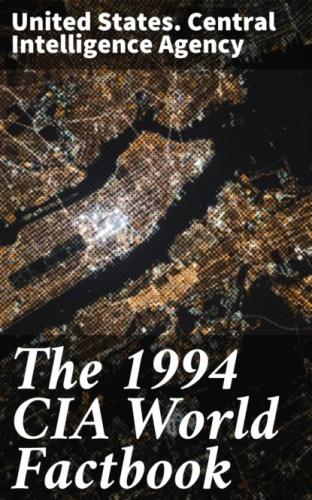Sea, Gulf of Mexico, Lake Maracaibo, Mediterranean Sea, and North Sea;
industrial waste and municipal sewage pollution in Baltic Sea, North
Sea, and Mediterranean Sea
natural hazards:
icebergs common in Davis Strait, Denmark Strait, and the northwestern
Atlantic Ocean from February to August and have been spotted as far
south as Bermuda and the Madeira Islands; icebergs from Antarctica
occur in the extreme southern Atlantic Ocean
international agreements:
NA
Note:
ships subject to superstructure icing in extreme north Atlantic from
October to May and extreme south Atlantic from May to October;
persistent fog can be a hazard to shipping from May to September;
major choke points include the Dardanelles, Strait of Gibraltar,
access to the Panama and Suez Canals; strategic straits include the
Strait of Dover, Straits of Florida, Mona Passage, The Sound
(Oresund), and Windward Passage; north Atlantic shipping lanes subject
to icebergs from February to August; the Equator divides the Atlantic
Ocean into the North Atlantic Ocean and South Atlantic Ocean
@Atlantic Ocean, Government
Digraph:
ZH
@Atlantic Ocean, Economy
Overview:
The Atlantic Ocean provides some of the world's most heavily
trafficked sea routes, between and within the Eastern and Western
Hemispheres. Other economic activity includes the exploitation of
natural resources, e.g., fishing, the dredging of aragonite sands (The
Bahamas), and production of crude oil and natural gas (Caribbean Sea,
Gulf of Mexico, and North Sea).
@Atlantic Ocean, Communications
Ports:
Alexandria (Egypt), Algiers (Algeria), Antwerp (Belgium), Barcelona
(Spain), Buenos Aires (Argentina), Casablanca (Morocco), Colon
(Panama), Copenhagen (Denmark), Dakar (Senegal), Gdansk (Poland),
Hamburg (Germany), Helsinki (Finland), Las Palmas (Canary Islands,
Spain), Le Havre (France), Lisbon (Portugal), London (UK), Marseille
(France), Montevideo (Uruguay), Montreal (Canada), Naples (Italy), New
Orleans (US), New York (US), Oran (Algeria), Oslo (Norway), Piraeus
(Greece), Rio de Janeiro (Brazil), Rotterdam (Netherlands), Saint
Petersburg (formerly Leningrad; Russia), Stockholm (Sweden)
Telecommunications:
numerous submarine cables with most between continental Europe and the
UK, North America and the UK, and in the Mediterranean; numerous
direct links across Atlantic via INTELSAT satellite network
Note:
Kiel Canal and Saint Lawrence Seaway are two important waterways
@Australia, Geography
Location: Southwestern Oceania, between Indonesia and New Zealand Map references: Southeast Asia, Oceania, Antarctic Region, Standard Time Zones of the World Area: total area: 7,686,850 sq km land area: 7,617,930 sq km comparative area: slightly smaller than the US note: includes Macquarie Island Land boundaries: 0 km Coastline: 25,760 km Maritime claims: contiguous zone: 12 nm continental shelf: 200-m depth or to depth of exploitation exclusive fishing zone: 200 nm territorial sea: 12 nm International disputes: territorial claim in Antarctica (Australian Antarctic Territory) Climate: generally arid to semiarid; temperate in south and east; tropical in north Terrain: mostly low plateau with deserts; fertile plain in southeast Natural resources: bauxite, coal, iron ore, copper, tin, silver, uranium, nickel, tungsten, mineral sands, lead, zinc, diamonds, natural gas, petroleum Land use: arable land: 6% permanent crops: 0% meadows and pastures: 58% forest and woodland: 14% other: 22% Irrigated land: 18,800 sq km (1989 est.) Environment: current issues: soil erosion from overgrazing, industrial development, urbanization, and poor farming practices; soil salinity rising due to the use of poor quality water; desertification; clearing for agricultural purposes threatens the natural habitat of many unique animal and plant species; the Great Barrier Reef off the northeast coast, the largest coral reef in the world, is threatened by increased shipping and its popularity as a tourist site; limited freshwater availability natural hazards: cyclones along the coast; subject to severe droughts international agreements: party to - Antarctic-Environmental Protocol, Antarctic Treaty, Biodiversity, Climate Change, Endangered Species, Environmental Modification, Hazardous Wastes, Marine Dumping, Marine Life Conservation, Nuclear Test Ban, Ozone Layer Protection, Ship Pollution, Tropical Timber, Wetlands, Whaling; signed, but not ratified - Law of the Sea Note: world's smallest continent but sixth-largest country; population concentrated along the eastern and southeastern coasts; regular, tropical, invigorating, sea breeze known as "the Doctor" occurs along the west coast in the summer
@Australia, People
Population:
18,077,419 (July 1994 est.)
Population growth rate:
1.38% (1994 est.)
Birth rate:
14.29 births/1,000 population (1994 est.)
Death rate:
7.38 deaths/1,000 population (1994 est.)
Net migration rate:
6.91 migrant(s)/1,000 population (1994 est.)
Infant mortality rate:
7.3 deaths/1,000 live births (1994 est.)
Life expectancy at birth:
total population:
77.57 years
male:
74.45 years
female:
80.84 years (1994 est.)
Total fertility rate:
1.83 children born/woman (1994 est.)
Nationality:
noun:
Australian(s)
adjective:
Australian
Ethnic divisions:
Caucasian 95%, Asian 4%, aboriginal and other 1%
Religions:
Anglican 26.1%, Roman Catholic 26%, other Christian 24.3%
Languages:
English, native languages
Literacy:
age 15 and over can read and write (1980 est.)
total population:
100%
male:
100%
female:
100%
Labor force:
8.63 million (September 1991)
by occupation:
finance and services 33.8%, public and community services 22.3%,
wholesale and retail trade 20.1%, manufacturing and industry 16.2%,
agriculture
